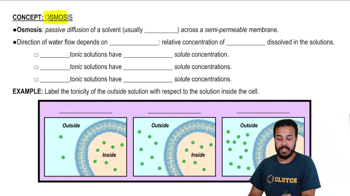Textbook Question
Add labels to the figure that follows, which illustrates some molecules that can and cannot pass through cell membranes unaided.
1173
views
 Verified step by step guidance
Verified step by step guidance Verified video answer for a similar problem:
Verified video answer for a similar problem:



 3:00m
3:00mMaster Introduction to Membrane Transport with a bite sized video explanation from Bruce Bryan
Start learning